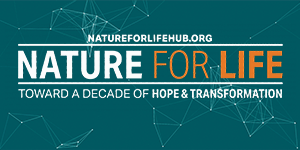HOW SUSTAINABLE ENGINEERING SOLUTIONS DEPEND ON BIODIVERSITY

Life on Earth, at least 3.5 billion years old, is endangered by human activity as never before. Although we arrived only very recently on the planetary stage – just 300,000 years ago – our species, Homo sapiens, one among several million others, has had a profound and detrimental impact on life in all its forms. At least one million species are now threatened with extinction, according to the most comprehensive study on biodiversity ever conducted by the United Nations, released in May of 2019.
When a species goes extinct, it takes with it all of its unique properties, all of the physical, chemical, biological, and behavioral attributes that have been selected for that species, after having been tested and re-tested in countless experiments over many thousands, and perhaps millions, of years of evolution. It takes with it all its engineering secrets that it, and perhaps it alone, possesses - the anatomical and mechanical designs that keep it alive - designs for heating, cooling, and ventilation; for moving most effectively and efficiently through water or air; for producing and storing energy; for making the strongest, lightest, most biodegradable and recyclable materials; and for many, many other functions essential for life. These engineering designs were selected because they were more perfectly suited to the tasks they performed than competing designs, and often because they were more energy efficient and resource conserving. Those that failed, that did not meet these requirements, and the organisms that possessed them, are no longer around. They were out-competed by those that did. By this process of elimination, Nature has, in effect, done our engineering “field trials” for us.
Humanity faces unprecedented engineering challenges if it is to survive. By looking at a small sample of wondrous designs found in the living world, we intend to make a compelling case that solutions to these challenges are all around us, sustainable engineering models in plants, animals, and microbes waiting to be discovered. We hope that our work serves as a warning that we are in grave danger of losing these models, some perhaps forever, if we do not preserve the rich diversity of life on Earth.
View our booklets for the United Nations:

With a million or more species currently at risk of extinction, as physician Gro Haarlem Brundtland,
former Director-General of the World Health Organization, once said about biodiversity...
“The library of life is burning
and we do not even know the titles of the books"



